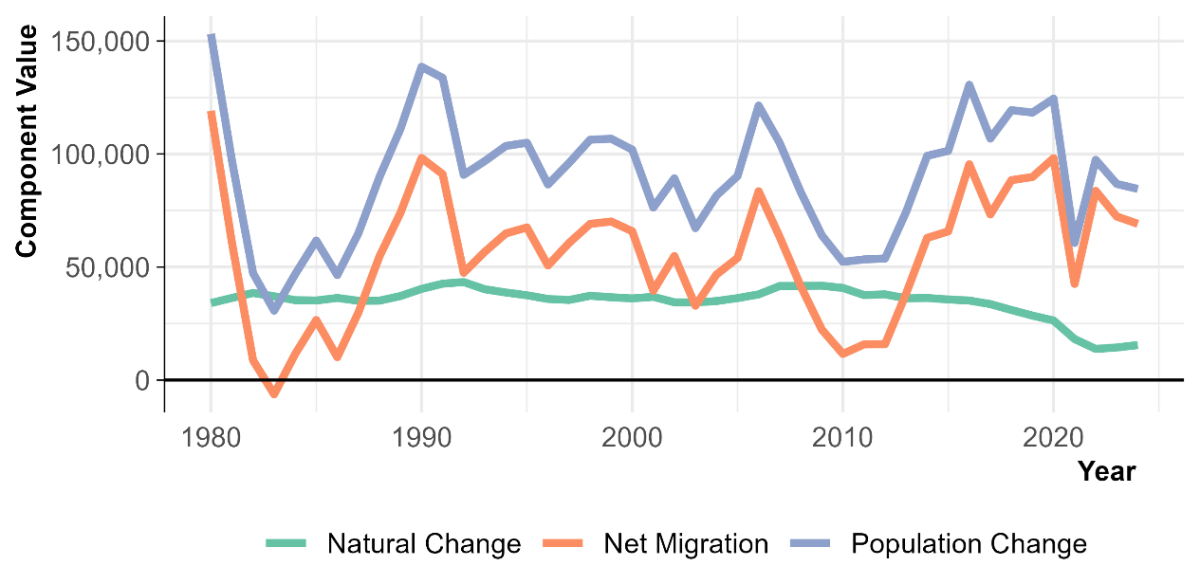
Washington State Population Reaches 8 Million in 2024 Amidst Slower Growth Trends
OLYMPIA, Wash. – The population of Washington state has reached an estimated 8,035,700 as of April 1, 2024, marking an increase of approximately 84,550 residents over the past year. This data comes from the Office of Financial Management’s annual estimates.
Current Growth Trends
While the state’s population is experiencing growth, the rate has slowed compared to the previous decade. The current year’s growth of 84,550 is significantly lower than the average annual increase of 98,200 recorded from 2010 to 2020. However, the growth rate remains consistent year-over-year, with an unadjusted rate of 1.1% for both 2023 and 2024. Since April 1, 2020, Washington’s population has increased by 329,400, representing a growth rate of about 4.3%.
Drivers of Population Growth
The primary contributor to this population increase is net migration, which accounts for 82% of the growth, translating to about 69,100 new residents. This figure reflects a decrease of 3,300 compared to the previous year.
Natural Change
Natural change, defined as the difference between births and deaths, contributed to 18% of the annual growth, adding approximately 15,500 people. However, births have been on the decline since 2017, primarily due to reduced fertility rates among younger mothers. Although fertility rates among mothers over 35 have increased, the overall trend has not compensated for the decline. Additionally, mortality rates have been rising, driven by the aging baby boomer population.
Housing Development in Washington
Washington has seen a robust increase in housing development, with 51,300 new housing units added over the past year—5,000 more than in the previous year. Notably, 67% of these new units were multi-family dwellings, continuing a decade-long trend. The majority of new housing, over 71%, was concentrated in the state’s five largest metropolitan counties: Clark, King, Pierce, Snohomish, and Spokane. King County alone accounted for 19,700 new housing units, representing 38% of the state’s total housing growth during this period. Although population growth remains strong, the demand for housing is starting to stabilize as more units are completed and added to the market.
Geographic Distribution of Growth
As in previous years, more than 68% of the state’s population growth occurred within the five largest metropolitan counties. Counties with populations between 100,000 and 350,000 contributed to 22% of the growth, while those with populations under 100,000 accounted for 10%, showing an increase from the prior year. The counties experiencing the fastest growth rates were Kittitas (2.7%), Grant (1.9%), and Clark (1.7%).
City Populations
As of April 1, 2024, the estimated population for Washington’s incorporated cities and towns reached 5,288,500, reflecting a 1.3% increase from the previous year. The cities with the most significant numeric increases included Seattle, Vancouver, Tacoma, Redmond, and Spokane Valley. Seattle, in particular, saw an increase of 18,500 residents, bringing its total to 797,700. The strong housing growth in these urban areas has been a significant factor in their population increases.
For more detailed information on population estimates across Washington, including data for counties and cities, additional resources are available through the Office of Financial Management.

